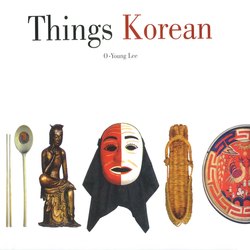Читать книгу Things Korean - O-Young Lee - Страница 12
На сайте Литреса книга снята с продажи.
ОглавлениеAn Intimate String Instrument
Komungo
The distinctive nature of even musical instrument is manifested more in how it produces sound than in the sound it produces.
No matter how beautiful or peaceful the music from Western culture's musical instruments can sometimes be, one cannot escape the fact that these instruments have an aggressive character. The piano separates the performer from his audience and, despite the fact that it is a string instrument, is played like a percussion instrument, in that the performer has to beat on its key-board. The performer assumes an attitude of confrontation with his instrument. The same goes for the violin, in spite of the fact that the performer almost hugs it to himself. Observe a bit more closely how it is held in performance, and you will get the impression that some bird in the act of flying off into the blue has been caught in one hand, stuck up under the chin, and with the other hand is simultaneously being sawed in half and plucked of its feathers. The western instrument which seems to be most intimate with its human performer is the guitar. In both its timbre and in its role it is different from the instruments of soloist recitals. At countless campfires and parties and other social gatherings its congenial strains serve to bring all together in a communal spirit. It also shows great intimacy with its master, cradled as it is in his lap while he is playing it.
But even the guitar, in comparison with the Korean komunko, cannot completely shed the character of confrontation and aggressiveness. The guitar is grasped at its neck, and set up in the lap; the komunko. on the other hand, is not grasped or clutched anywhere, and is in a fully reclining position, rested across one's crossed legs. There is not the slightest hint of confrontation or aggression in the movement of the person playing the komunko. In the performer, left hand pressing the chords and right hand working the how, we see a mother stroking her sleeping baby, or one straightening the cover of the sleeping lover. On another occasion you will glimpse one feeling the brow of a sick friend, or another rinsing his hands in a flowing brook. If the Westerner were to see the komunko in action, he might see the Pieta. Man grieving over the lifeless body of the son on her lap. There is no sense of confrontation or struggle between the komunko and the musician playing it. They are the most intimate of friends.
In action, all musical instruments either stand erect by themselves or are propped up with something. As a rule, they produce sound when they are erect, and fall into silence when they are resting back in recline. But when an instrument assumes that erect posture, trying to escape the hold of gravity, its tone is going to be strident. When the violin is hitting its high notes, its song and the gestures of the one playing it shoot off sparks into the sky. And just picture those trumpets of the "Fanfare" reaching together to the heavens.
And then there is the komunko. the one exception to this rule that activity happens in an erect position. The komunko performs in recline, and rests standing erect, propped against something, after it has finished performing. So it is active in its horizontal state, and inactive in its vertical state.
When does the human being recline? Certainly not when he is working or fighting or in pursuit of his goals. The musical instrument, too, achieves its purpose when it is erect.
The komunko. however, could not impart the intimacy and tenderness it does if it were played in an upright position. This apparent paradox in the komunko may be the very reason we feel a real friend close by when we hear its moving strains.
